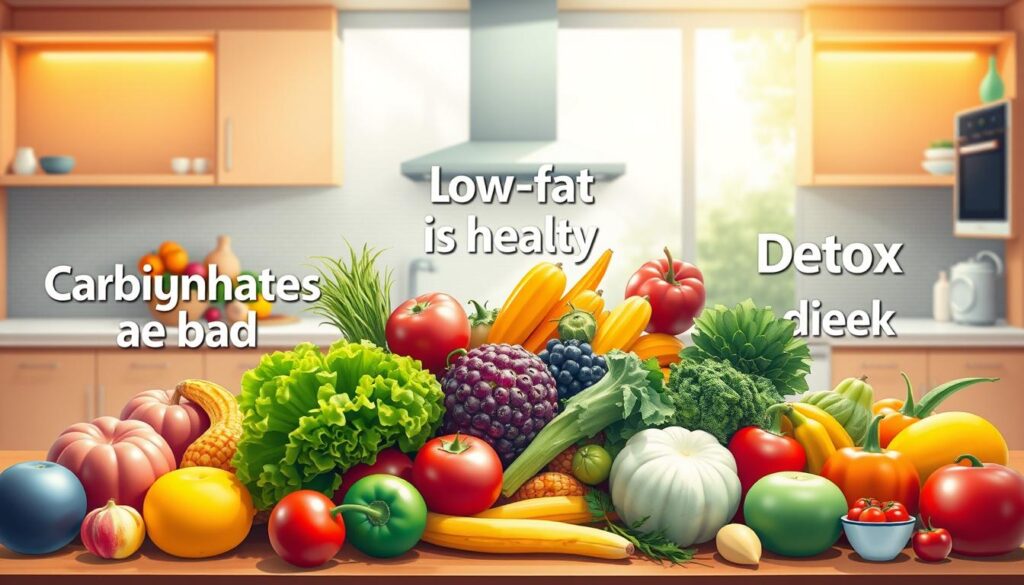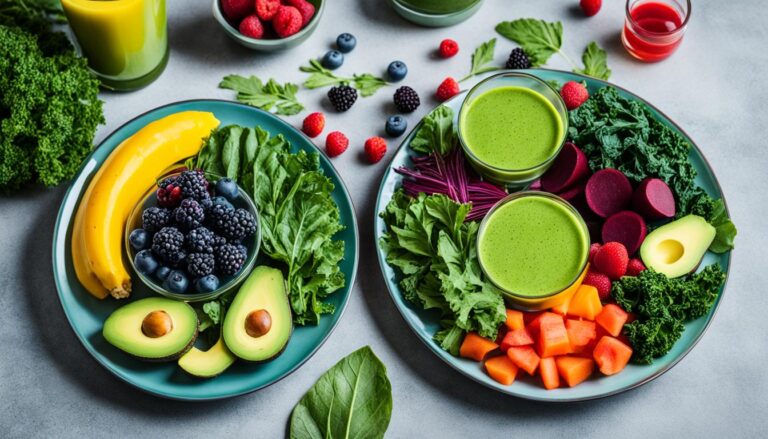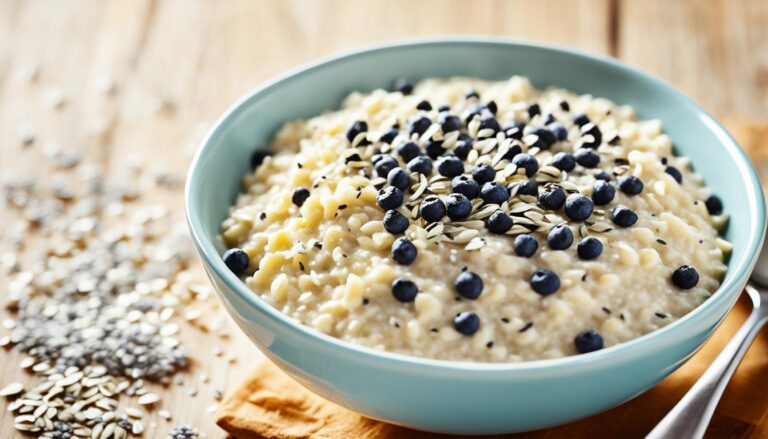Do you truly understand how your food choices impact your health? A 2022 study revealed that 85% of Americans overestimate the quality of their meals often mistaking temporary trends for lasting nutrition.
This gap between perception and reality highlights why grasping the fundamentals of nutritious eating matters.
Proper dietary planning goes beyond chasing superfoods or eliminating entire food groups. Instead it focuses on consistent nourishment through diverse whole food sources. Fruits vegetables whole grains, and lean proteins form the foundation but proportions and personal needs vary widely.
Many popular diets prioritize restrictions over balance, creating unsustainable habits. Unlike rigid meal plans a science-backed approach adapts to individual lifestyles while delivering essential vitamins, minerals, and macronutrients. Age activity levels and health conditions all influence ideal intake.
This guide cuts through confusion by explaining how different nutrients interact within the body. You’ll learn to build meals that support energy immunity, and long term wellness without perfectionism. Let’s redefine healthy eating as a flexible, enjoyable practice rather than a list of rules.
Key Takeaways
- Variety matters more than any single perfect food
- Personal needs influence dietary requirements
- Restrictive diets often lack scientific support
- Sustainable changes beat short-term fixes
- Nutrients work synergistically for optimal health
Introduction to a Balanced Diet
Every meal shapes your health future. Research shows four leading U.S. death causes heart disease stroke, cancer, and diabetes connect directly to food choices. What you consume today determines cellular repair immune responses, and disease resistance tomorrow.

Why Healthy Eating Matters
Poor nutrition acts like slow-acting poison. Diets heavy in chips, frozen meals, and sugary drinks triple risks for obesity related conditions. For example, daily soda drinkers face 26% higher diabetes odds than those avoiding sweetened beverages.
Nutrient-rich foods work differently. Leafy greens supply magnesium for nerve function. Fatty fish deliver omega-3s that combat inflammation. These choices build mental clarity and physical stamina simultaneously.
The Role of Nutrition in Daily Life
Your body rebuilds itself using dietary materials. Without adequate protein muscle repair slows. Insufficient vitamin C weakens collagen production, affecting skin and joints. Even mild dehydration impairs concentration and reaction times.
| Diet Type | Disease Risk | Nutrient Content | Longevity Impact |
|---|---|---|---|
| Ultra-Processed | High | Low | -7 years |
| Mediterranean | Low | High | +5 years |
| Standard American | Moderate | Mixed | Neutral |
Consistent healthy eating patterns outperform short term diets. Those maintaining varied, whole-food meals report 43% fewer sick days and 31% better productivity at work. Nutrition forms the bedrock for how you think, move, and age.
Core Components of a Balanced Diet
The secret to lasting health lies not in extremes but in smart combinations. Two critical factors separate nourishing meals from empty calories: nutritional value per bite and strategic macronutrient pairing.
Nutrient Density and Variety

Not all foods fuel your body equally. Compare 100 calories of soda pure sugar to 100 calories of spinach iron folate, vitamin K. Nutrient-dense options deliver more:
- Whole eggs vs egg whites 6x more vitamin D
- Quinoa vs white rice double the protein
- Almonds vs potato chips healthy fats vs trans fats
Diverse plates support gut health and disease prevention. Rotate grains like oats farro, and buckwheat weekly. Mix protein sources between fish legumes, and poultry.
Macronutrient Balance Carbs Proteins and Fats
These three power players work best together:
| Macronutrient | Role | Smart Sources |
|---|---|---|
| Carbs + Fiber | Energy + digestion | Sweet potatoes, berries |
| Protein | Muscle repair | Greek yogurt, lentils |
| Fats | Hormone production | Avocados, walnuts |
Pairing fiber rich carbs with protein slows sugar absorption. Adding healthy fats to vegetables boosts vitamin absorption. This synergy prevents energy crashes and overeating.
Active individuals might need more protein, while others benefit from complex carb focus. Customize ratios while keeping meals colorful satisfying, and flavor-forward.
Understanding What is a balanced diet? Beginner’s Guide
The USDA’s MyPlate model simplifies meal planning using visual proportions. This science-backed approach divides plates into four sections: half for fruits and vegetables a quarter for protein, and a quarter for grains. Daily dairy servings complete the framework.

Colorful produce delivers vitamins and antioxidants. Rotate seasonal options like berries, spinach, and bell peppers to maximize nutrient diversity. Frozen varieties retain similar benefits when fresh isn’t available.
Lean protein sources include fish, beans, and skinless poultry. Plant-based alternatives like lentils provide fiber alongside muscle building amino acids. Whole grains such as quinoa or brown rice offer sustained energy through complex carbohydrates.
| Food Group | Daily Goal | Smart Swaps |
|---|---|---|
| Fruits | 1.5-2 cups | Frozen mango vs candy |
| Vegetables | 2-3 cups | Roasted carrots vs fries |
| Grains | 6 oz equivalents | Oatmeal vs sugary cereal |
Caloric needs fluctuate based on activity and metabolism. The MyPlate Plan calculator adjusts recommendations using height, weight, and exercise frequency. Most adults thrive on 1,600-2,400 calories daily.
This flexible system accommodates cultural preferences and food allergies. Substitute corn tortillas for whole wheat bread or tofu for chicken. The goal remains consistent: nourish your body without rigid rules.
Practical Tips for Healthy Eating and Meal Planning
Transform your kitchen into a nutrition hub with strategic planning. Regular grocery trips and organized meal prep turn healthy eating from a chore into an effortless habit. Focus on flexible systems rather than rigid recipes to accommodate busy schedules.
Smart Grocery Shopping Strategies
Build meals around versatile staples. Prioritize these categories during weekly shopping:
| Category | Must-Have Items | Budget Tips |
|---|---|---|
| Produce | Spinach, apples, frozen berries | Buy in-season vegetables |
| Proteins | Eggs, canned beans, chicken breast | Purchase family packs |
| Pantry | Oats, quinoa, olive oil | Choose store brands |
Keep nuts and seeds visible for quick snacks. Store chopped vegetables at eye level in clear containers.
Simple Meal Ideas for Every Day
Combine three elements in every meal:
- Protein: Scrambled eggs or baked tofu
- Healthy fats: Avocado slices or almond butter
- Fiber source: Roasted sweet potatoes or black beans
Batch-cook grains weekly for fast assembly. Mix frozen vegetables into omelets or stir-fries.
Portion Control and Scheduling Meals
Use hand measurements for serving sizes:
| Food Type | Portion Guide |
|---|---|
| Proteins | Palm-sized portion |
| Carbs | Cupped handful |
| Fats | Thumb-sized amount |
Eat every 3-4 hours to maintain energy. Pack portable snacks like nuts or hard-boiled eggs for busy days.
Debunking Common Myths about Balanced Diets
Nutrition advice often drowns in extremes either strict rules or guilt free indulgence. Let’s separate fact from fiction with science backed clarity.

Myth: Counting Calories is Everything
While calories matter for weight management, quality trumps quantity. A 100-calorie snack pack spikes blood sugar faster than 100 calories of almonds. Foods interact with your biology, not just your calculator, notes nutrition researcher Dr. Ellen Pratt.
Studies show people prioritizing nutrient-dense foods naturally regulate intake better. Obsessive tracking often backfires increasing stress hormones that promote fat storage.
Myth: All Processed Foods are Harmful
Processing exists on a spectrum:
| Minimally Processed | Ultra Processed |
|---|---|
| Frozen vegetables | Soda |
| Canned beans | Donuts |
| Rolled oats | Instant noodles |
Smart choices include fortified whole-grain bread or washed salad kits. These save time while delivering essential nutrients.
Balance means enjoying occasional treats without guilt. Lasting healthy eating habits thrive on flexibility, not food police mentality.
Conclusion
Building lasting health requires combining science with personal preference. Focus on colorful plates filled with whole grains, vegetables, and quality proteins rather than restrictive rules. These choices supply essential nutrients while supporting energy levels and disease prevention.
Start with small, sustainable swaps. Replace sugary snacks with nuts or fresh fruit. Choose whole-grain options over refined carbohydrates. Gradually increase plant-based meals featuring beans and lentils for fiber-rich protein sources.
Remember that nutrition needs vary by age, activity, and health status. A construction worker might require more calories than an office employee. New parents may need quick, nutrient-dense meals. Tailor your approach while maintaining core principles of variety and moderation.
Progress trumps perfection. One indulgent meal won’t derail healthy eating habits, just as a single salad won’t transform your health. Track improvements in energy, sleep quality, and focus rather than obsessing over daily fluctuations.
For personalized guidance, consult a registered dietitian. They’ll help interpret nutrition science through the lens of your lifestyle, preferences, and goals. Your plate becomes a powerful tool for wellness when knowledge meets consistent action.





